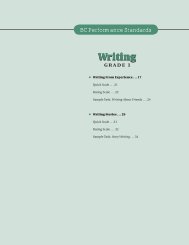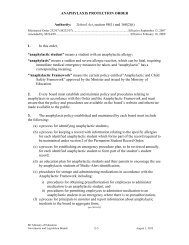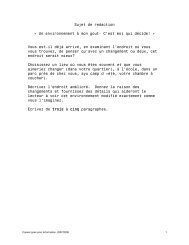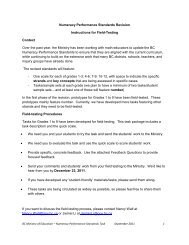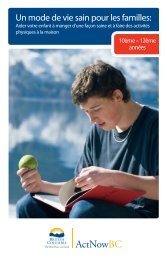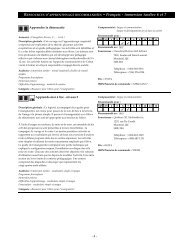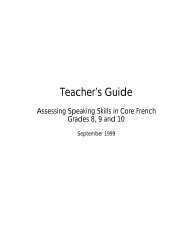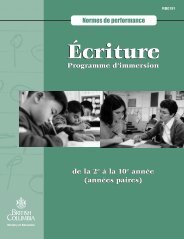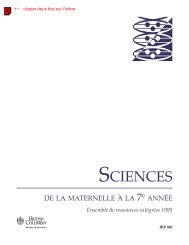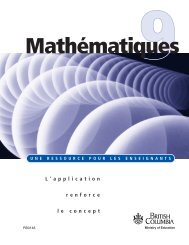A Guide for Classroom Teachers - Education
A Guide for Classroom Teachers - Education
A Guide for Classroom Teachers - Education
Create successful ePaper yourself
Turn your PDF publications into a flip-book with our unique Google optimized e-Paper software.
12<br />
12<br />
• ESL students learn English better when there is a meaningful and purposeful context<br />
<strong>for</strong> communication, and a holistic approach to instruction is used. Research and<br />
experience have shown that studying language in “bits and pieces” is not a very<br />
effective way of learning it.<br />
• English language proficiency and knowledge of Canadian culture are important <strong>for</strong><br />
the success of students.<br />
Supported integration of ESL learners into age-appropriate<br />
classes is the ideal. ESL students cannot af<strong>for</strong>d to wait until<br />
they have fully mastered the language to pursue their<br />
development in other spheres.<br />
• There are clear educational benefits to maintaining a students’s first language(s):<br />
student learning is enhanced by judicious use of two or more languages.<br />
• To facilitate learning, students should wherever possible see their history, literature,<br />
and cultural experiences in general reflected in the classroom.<br />
• Parents play a vital role in the education of their children by working in partnership<br />
with educators.<br />
• Effective reporting should recognize language and cultural differences.<br />
ESL ESL Learners: Learners: A A <strong>Guide</strong> <strong>Guide</strong> <strong>for</strong> <strong>for</strong> <strong>Classroom</strong> <strong>Classroom</strong> <strong>Teachers</strong><br />
<strong>Teachers</strong>




